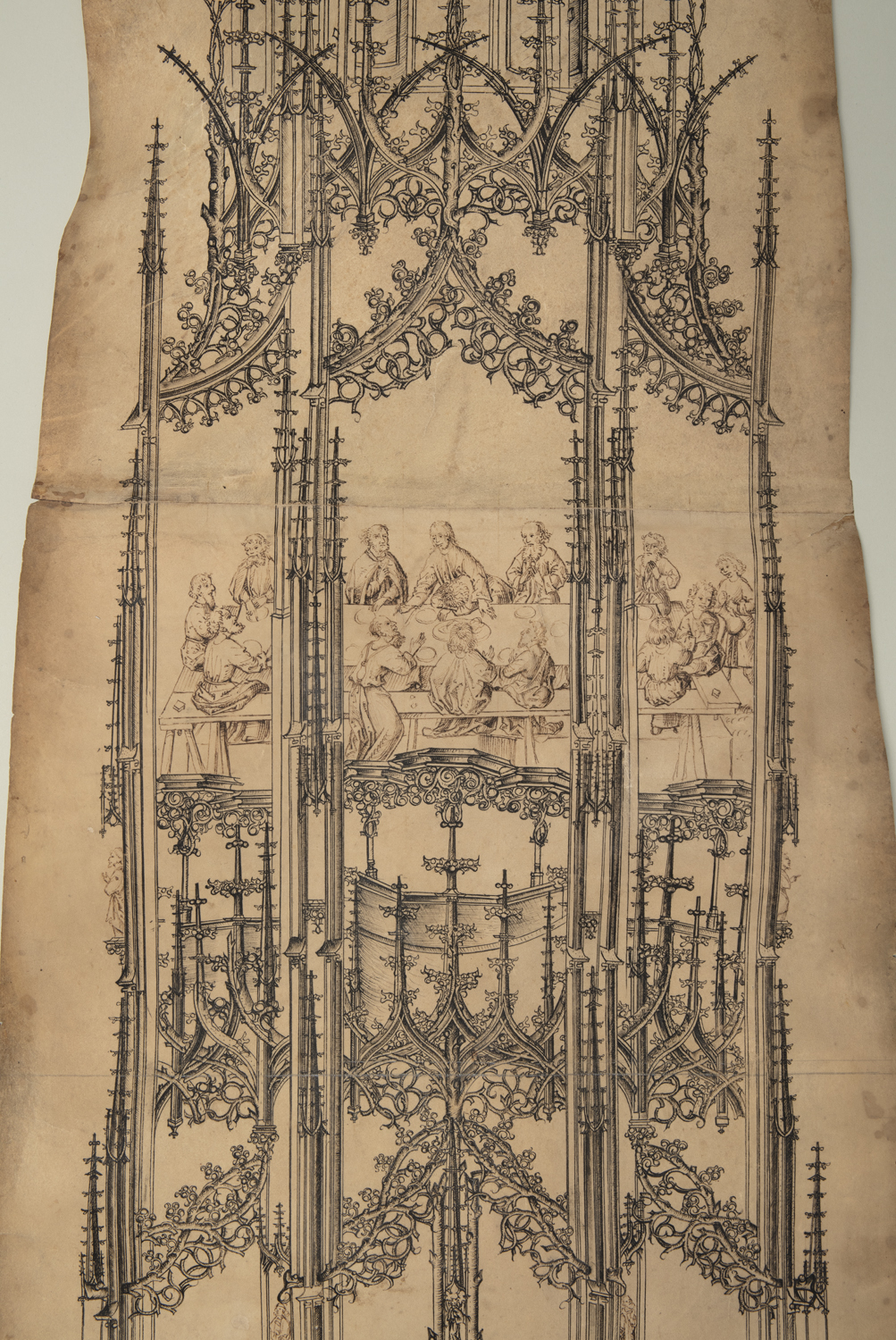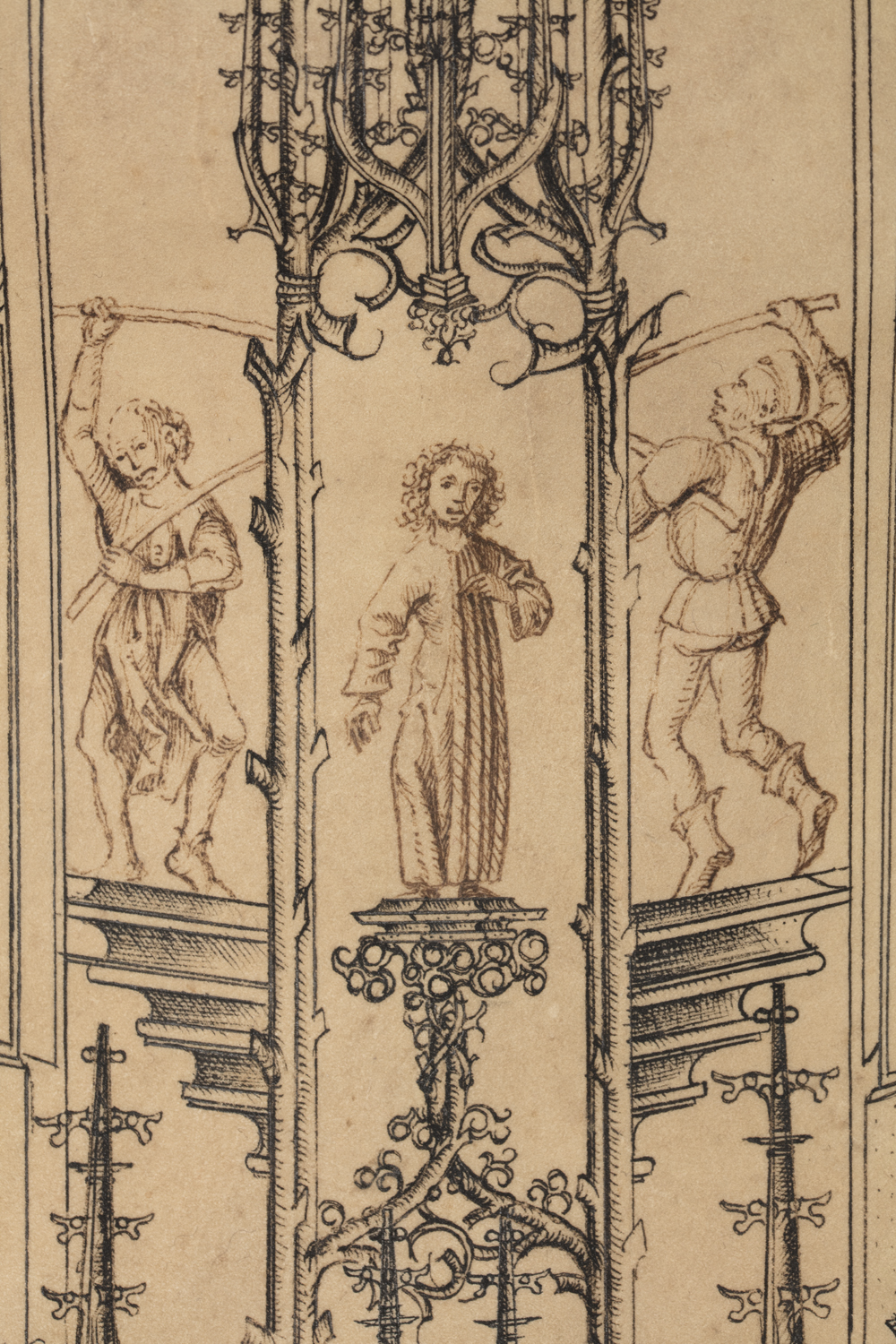Design for a Monumental Sacrament House
Lorenz Lechler and Workshop German
Unidentified
Unfurling to nearly eleven feet, this drawing is as monumental as the architectural structure it depicts. The design represents a sacrament house, a soaring architectural structure within a church or cathedral in which the consecrated Communion host was kept. The drawing conveys at a single, sweeping glance the daring of medieval architects, and the intimate interplay of medieval sculpture and its architectural setting. Here, we see where art meets engineering, where sophisticated draftsmanship aligns with architectural ambition.
The late-Gothic architect associated with the present design is Lorenz Lechler. He is best known for the Instructions, a document he wrote for his son Moritz, which is one of very few written sources on the practice of Gothic architecture design. He was a celebrated architect in his day. He worked in various cities in present-day Germany, and was even put forth by the city of Esslingen as a candidate to assist in the completion of the Duomo in Milan.
At present, this is the only original architectural drawing that can be attributed to Lechler with reasonable certainty. The intended location for this particular sacrament house is unknown, although its monumentality suggests a prestigious commission.
Due to rights restrictions, this image cannot be enlarged, viewed at full screen, or downloaded.
This artwork is meant to be viewed from right to left. Scroll left to view more.





